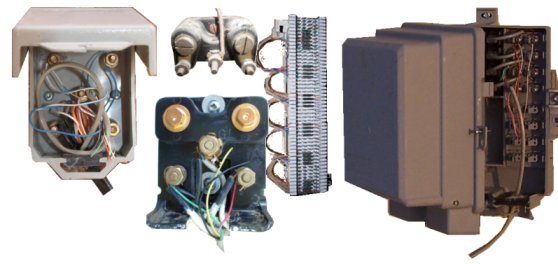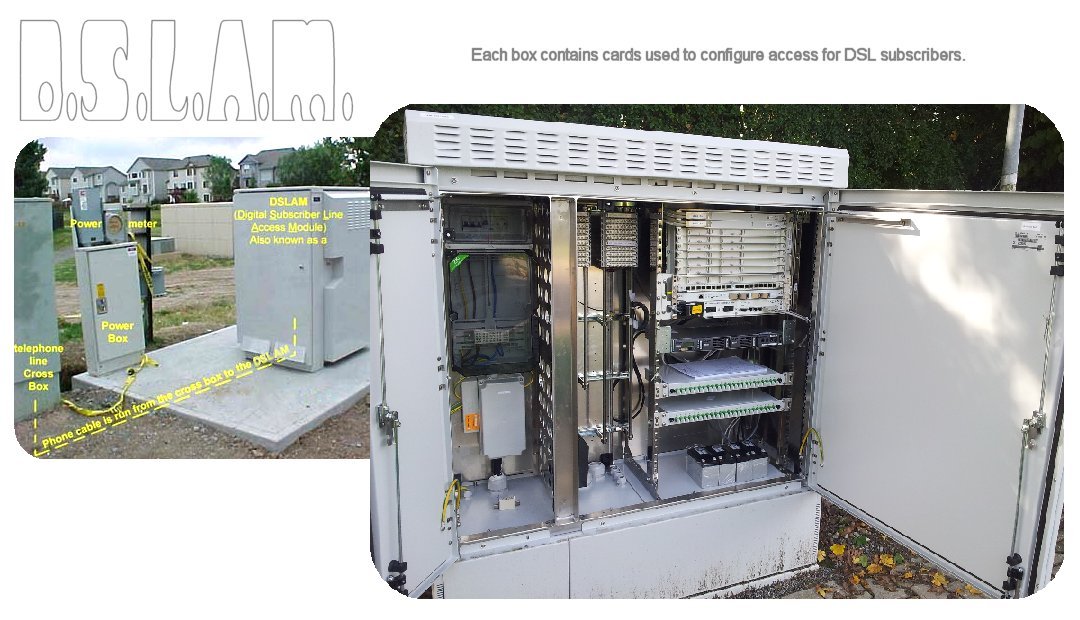Plain old telephone service POTS is voice-grade telephone service employing analog signal transmission over copper loops. POTS is generally restricted to about 52 Kbps and cannot handle broadband speed. POTS, the traditional phone network is also known as the public switched telephone network PSTN.
The telephone company provides for you a dialtone from the global telephone network. The wire carrying your dialtone will be attached to your home directly to the Demarc. Demarch or Dmarc is short for "demarcation point" which is the point where the telephone company network ends and connects with the wiring at the customer premises. You may find the demarc on the inside or outside of your home or business.

Illustration: Examples of the Demarc (DMARC D-MARC).
A 66 block (also M-Block) is a type of punchdown block used to connect sets of wires in a telephone system. Often, more frequently in smaller commercial settings, the punch down block is the demarc.
Maintenance of the demarc itself is generally the responsibility of the telephone company. Any lines and equipment connected to the demarc are the responsibility of the consumer.
DT or Dial Tone is a telephone signal sent by a telephone exchange or PBX (private branch exchange) to your phone when it is "off hook." The tone indicates a working exchange that is ready for you to dial your party. The tone stops when you being to dial on a rotary system or tone is initiated in touch tone dial.
A DSLAM (Digital Subscriber Line Access Multiplexer) is a network device that may be at a telephone office or various points in a city where signals are received from multiple customer Digital Subscriber Line (DSL) connections which are in turn placed on a high-speed backbone line using multiplexing techniques. DSLAM multiplexers connect DSL lines with some combination of asynchronous transfer mode (ATM), frame relay, or Internet Protocol networks.
DSL Broadband Internet Service is a technology for bringing high- bandwidth information to homes and small businesses over POTS lines. DSL uses DWDM multiplexing. In symmetric digital subscriber line (SDSL) services, the downstream and upstream data rates are equal. However, ADSL or asymmetric digital subscriber line is far more common since customers demand faster download speeds being as the compromise is designed to best utilize available bandwidth.
